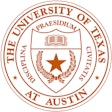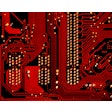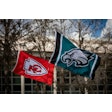![The new Milwaukee Bucks arena will incorporate smart systems to improve operational and energy efficiency. [Rendering courtesy of Populous]](https://img.athleticbusiness.com/files/base/abmedia/all/image/2017/06/ab.smFac_617_feat.png?auto=format%2Ccompress&q=70&w=400)
Alexa, show me the future.
Imagine driving up to the building. A camera recognizes your license plate and opens the garage. When you come into the building, your smartphone tells it who and where you are, and when you go into a room to work, the lights and temperature adjust to your preferences.
Okay, this scenario was not provided by Amazon's voice assistant but rather Reed Voorhees, an architect out of CannonDesign's St. Louis office. And what he's describing is not the future but an actual office building in Amsterdam. The Edge has been called the smartest building in the world, and the greenest. Though its sophisticated network of technology is far beyond what most athletic facilities can achieve, it's not as far as you might think — and the gap is shrinking every day.
"Buildings are becoming more technically sophisticated in part because the technology is there and in part because the users are more technologically inclined," Voorhees says. "iBeacons and geo-fences are being utilized in athletic facilities — a student walks up and the building knows they're there and can interact with the student through an app."
Sensors, beacons and the like are being used not only to improve the experience of the building user but to help make modern facilities self-aware, connecting everything from HVAC and lighting systems to digital displays. The data being shared essentially serves as a pulse for the building and allows it to run more efficiently and securely. This Internet of Things — sharing of information between data-enabled devices and objects — is quickly changing how facilities are designed, used and experienced.
![Internet of Things: The interconnection via the Internet of computing devices embedded in everyday objects, enabling them to send and receive data. [Rendering courtesy of Populous]](https://img.athleticbusiness.com/files/base/abmedia/all/image/2017/06/ab.smFac1_617.png?auto=format%2Ccompress&fit=max&q=70&w=400) Internet of Things: The interconnection via the Internet of computing devices embedded in everyday objects, enabling them to send and receive data. [Rendering courtesy of Populous]
Internet of Things: The interconnection via the Internet of computing devices embedded in everyday objects, enabling them to send and receive data. [Rendering courtesy of Populous]
Exploring the IoT
Arizona State University is a hotbed for this type of technological innovation, working in close collaboration with tech giant Intel Corp. in a number of areas, including a Smart Stadium Initiative that utilizes Sun Devil Stadium as a technology guinea pig.
"We started with placing 44 sensors in a specific section of the stadium to collect temperature, humidity, sound, vibration data, things like that," says Chris Richardson, assistant vice president of IT development at ASU, which then invited fans at a game to compete for the honor of loudest fan section. "The whole goal was to prove that we can use these sensor packs, prove that we can store the data, prove that we can make it valuable and interesting."
How data is collected and used is the crux of what makes a building smart. At least that's the philosophy of Johnson Controls, a Milwaukee-based building-controls company and official "smart partner" for the new Milwaukee Bucks arena. "We look at three categories of systems that go into a building," says Jim Nannini, vice president of the company's Building Wide Systems Integration division, who points to building systems (controls for environment and building security, for example), business systems (IT networks, computer assets, wireless, ticket management, event planning) and specialty systems (A/V, digital signage). "We look at those three different categories of systems, and to drive the smart outcomes, we bring all those systems together."
When all of the systems within a building are talking to each other and sharing information, the building operates more efficiently. "We're looking at various building systems — from building controls to physical security, fire prevention, heating and cooling," Nannini says. "Scoreboards, phones, printers can be put into a sleep mode by taking data that comes from the event-scheduling system."
RELATED: Fitness Equipment Usage Tracking Technologies
This interconnectedness becomes even more feasible given the advancements in the technology involved. For example, Power over Ethernet is one concept Voorhees thinks will have a notable impact on building design in coming years. Ethernet systems are known primarily as transporters of data, but they can also power devices such as desk phones. The same concept can be applied to LED lighting. "Energy use is so low that they can actually power the lighting in a building with Ethernet cables," Voorhees says. "It's sort of like two different levels of use going through the same cable."
Because the cable is running information and electricity, the lighting and any attached sensors become a connected data system. "They can put smoke detectors, light sensors, any sensors that they want to be able to read and run it through the same system and integrate with the light fixtures," Voorhees says.
The first large-scale example of PoE technology on a college campus can be seen at Clemson University's Watt Family Innovation Center. Not only can the system use real-time data to determine when a room is occupied or vacant and automatically adjust the lights, it can also sense natural light levels and adjust the room lighting accordingly. All told, the system adds up to a 70 percent energy savings.
![As part of its Smart Stadium Initiative, Arizona State University used sensors to track everything from parking availability and noise level to water usage and temperature. [Images courtesy of ASU] Click here to see more](https://img.athleticbusiness.com/files/base/abmedia/all/image/2017/06/ab.sfa_sm.png?auto=format%2Ccompress&fit=max&q=70&w=400) As part of its Smart Stadium Initiative, Arizona State University used sensors to track everything from parking availability and noise level to water usage and temperature. [Images courtesy of ASU] Click here to see more
As part of its Smart Stadium Initiative, Arizona State University used sensors to track everything from parking availability and noise level to water usage and temperature. [Images courtesy of ASU] Click here to see more
The innovation mindset
Forward-thinking facilities start with a team of forward-thinking people. "Our company has been pushing to be more technically innovative, and I hope those are things we can press and push and bring to the forefront," says Voorhees.
Administrators at ASU don't need to be sold on the value of smart technology — it's actually a selling point for the school, which has been voted most innovative school in the nation two years running by U.S. News & World Report. Moreover, most of the experimentation is done on a small, much more affordable scale. "We weren't asking for money to instrument the entire stadium," Richardson says. "To change the conversation for what is possible is a lot easier when you just need a Cloud-services account, an Amazon Echo, and a few smart lights and sensors."
The Smart Stadium Initiative started with examples of what IoT could do to improve the fan experience, an area with a highly visible ROI, but it's also giving stakeholders a taste of less-exciting but more-practical applications. "This last season we also brought the demonstration into the suite itself and hosted a number of stakeholders as well as our tech partners," Richardson says. "We started collecting data in the suite with the purpose of visualizing the data. We had hot- and cold-water meters where you could see when the water was on. If it stayed on for 10 seconds, it set off a visible alert and even pushed alerts to a mobile app.
"When people see we have the technical capability, there's a higher level of interest," he continues. "These conversations are happening, but now at a different scale. We've brought up some unique discussions. It's now, 'How do we scale this to the entire stadium, how do we do what we did for parking lots and apply it to other support functions like facility maintenance?' "
Sports venues especially want to be recognized as state-of-the-art. It's Nannini's job to help them keep that reputation as long as possible. "Our clients call it future-readiness, the ability to be able to adjust as technology advances without doing a total rip and replace," he says. "Whenever we're designing technology, we're looking at it not just from the standpoint of what's being installed when the building opens but also what's coming down the line."
Tech-wary
The cost of investing in technology is a major hurdle, but the biggest limitation to IoT technology right now is its own limitless potential. "IoT can do anything," Richardson says. "But because it can do anything, because there are so many options, it gets a little tough for any one person to figure out. It can be overwhelming."
Translating captured data into something meaningful and useful is a big part of what Richardson and the ASU team do. And it takes a pretty diverse team. "There's a definite infrastructure part," Richardson says, noting that their experimentation is possible in part because new networking equipment and Wi-Fi upgrades are being installed at Sun Devil Stadium during a complete phased renovation effort. "Then, who knows about sensoring the devices? Who knows how to interpret that data? Who knows how to make sure it's secure? Who knows how to push this to the Cloud and interoperate with an app? By the time you get done asking questions like these, there's so many that no one group can answer them all."
Security is one issue in particular that commands Richardson's ongoing attention. "By design, we haven't gone to places that put much risk into security," he says. "We aren't collecting sensitive information, but we're proving that we can collect data in mass quantities."
But just because they're not doing anything that requires extra security doesn't mean they aren't thinking about it. "Just like we're experimenting on outcomes, it also allows us to experiment with how best to build security into whatever part of the equation we're focusing on."
The stadium is only one area on Richardson's ASU watch. Other initiatives focusing on different goals and outcomes are underway in various areas of the campus. "The one I'm most excited about — because it really transforms the experience with our students — is learning more about how our physical spaces are being used and the densities in which they're being used. We're utilizing physical and wireless beacons and interoperating what data we collect with mobile applications all to define a better experience for the students and ultimately build a better relationship with them."
This is just the starting point of smart facility design. It's now a matter of showing facility owners and stakeholders what's possible with IoT technology. "The capabilities are there for us to do almost anything," says Voorhees. "It's just finding applications to implement those things."
This article originally appeared in the June 2017 issue of Athletic Business with the title "Where will the Internet of Things take athletic facilities?" Athletic Business is a free magazine for professionals in the athletic, fitness and recreation industry. Click here to subscribe.





































